Products are chosen independently by our editors. Purchases made through our links may earn us a commission.
According to a recent study, Americans are really into ice. I mean, really into ice. Over half of those surveyed self-identified as “ice obsessed,” and consumed up to 116 glasses of ice per month, and over half stated that not having ice available meant they would drink less water.
This may seem extreme, but if you think about it, when was the last time you heard someone order a water neat?
Despite our fixation with ice, when it comes to keeping our homes stocked up, many of us are stuck in the past using basic plastic ice cube trays that we have to fill at the faucet. But, is this good enough to keep up with our ice fixation?
Let's examine how we keep our freezers well stocked in ice.
Two fridge brands step up their ice game
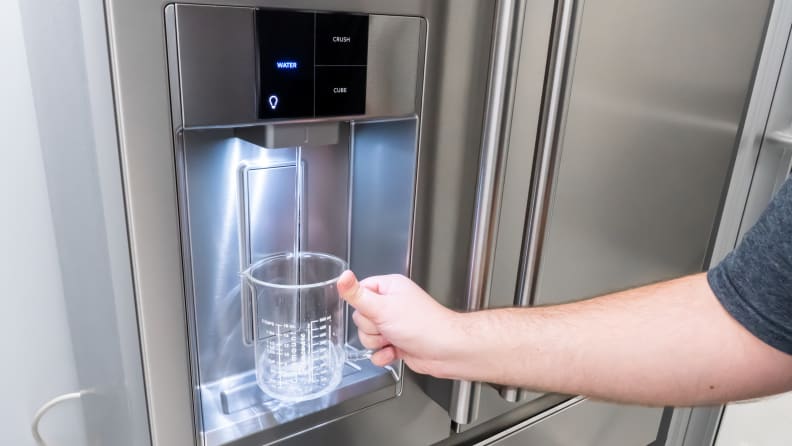
Built-in dispensers are convenient, but most have difficulty keeping up with demand.
Until recently, built-in ice-makers have been mediocre at best, but they've turned a corner as different brands have been iterating on how to best get customers the ice they are so clearly clamoring for.
On this end, two companies have really pulled to the forefront of the ice wars: Bosch and LG.
For ice aficionados out there, LG's new fridges can actually make spherical ice. Spherical ice is valuable because it melts slower than other, cubed shapes. However, this technology is still new, and the rate these fridges are able to make spheres is relatively slow. Even after a recent update, one of these LG fridges can only produce about six spheres per day. "Quality over quantity" sounds like an empty mantra with a warm drink in your hand.
For its part, Bosch has been making improvements on the speed and volume of its ice-makers. We recently tested the B36CD50SNS, which has Bosch's QuickIcePro system. Bosch claims QuickIcePro is capable of delivering an impressive 12 pounds of ice per day, and when we tested it, this claim stood up. We got a full glass of ice every 36 minutes, a much more reasonable rate for keeping up with thirsty guests.
As a bonus, these newer ice-makers take up a minimum of space in your freezer, and seem to be getting smaller with each iteration. With these newer Bosch fridges, you don't have to make nearly as much of a storage space sacrifice when you get a built-in ice-maker.
Traditional ice cube trays are old-fashioned and slow
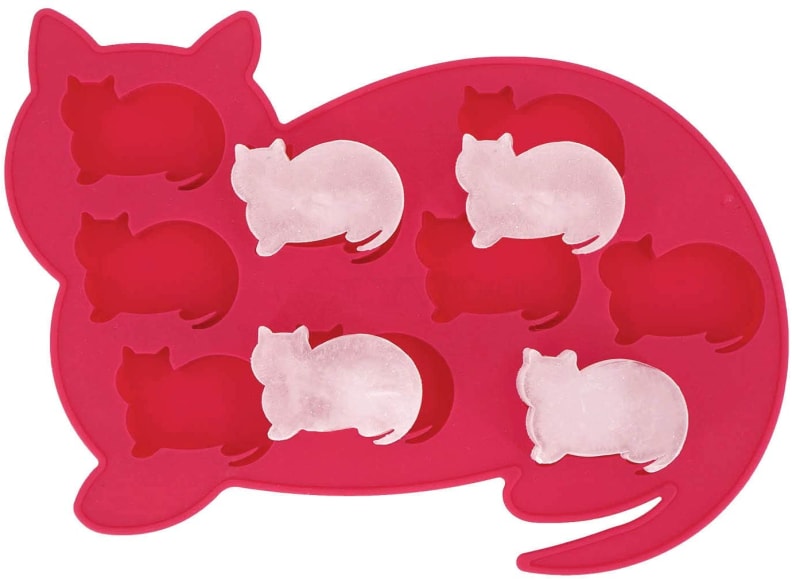
Traditional ice trays come in all shapes and sizes, giving users a great deal of control over what kind of ice they make. However, they're less efficient than other methods.
The humble ice cube tray has been a staple of ice production since their invention in 1933. You usually get one for free with your fridge, but even fancy ice cube trays are cheap.
Ice cube trays give you more control over what shape your ice is—and the shape of your ice matters. Higher surface area ice, like the cat-shaped cubes above, melt much faster than a sphere of ice would. Faster melting ice means your drink will cool down incredibly quickly, but it also means it'll get watered down or warm if you aren't guzzling it.
While ice cube tray technology has improved over the years, trays still have the same host of downsides. First and foremost, using an ice cube tray is one of the more labor-intensive ways to make ice. Replenishing the trays requires constant upkeep, and while you may not have a problem keeping up with your own ice use with a couple of trays, it just doesn't cut it when you have guests over. Based on our in-house testing, the average fridge takes 2–4 hours to get cubes frozen solid. The average ice tray makes 16 cubes at a time. That's only four ice cubes every half hour.
If your tray has an open top, your ice will be at the mercy of your freezer's interior. This can result in your ice acquiring unwanted flavors, depending on what else is in your freezer.
Bagged ice works in a pinch, but isn't sustainable
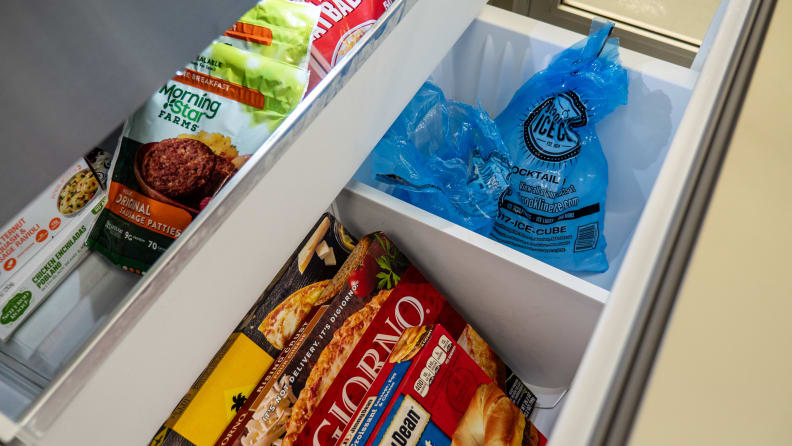
You could buy bags of ice, but that's both expensive and requires rearranging your freezer to make room each time.
Buying a few bulk bags of ice is the traditional way a lot of us prepare for a party, mostly because it's a convenient option for the last minute: If you need a bunch of ice in a hurry, you can always pick up a few bags from your nearest supermarket or gas station. Of course, having to run to the store each time you're having guests over is more of a Band-aid than a long-term solution.
Bulk bags of ice also scale well with the size of your party. Just a small get-together? A bag or two will be fine. A large event? Best bring a friend to help you carry it all. Theoretically, the size of your icy haul is only limited by the size of your freezer, but chances are your freezer isn't empty—especially if you're doing this last-minute. Bags of ice are huge and can require some significant work to make fit. You may even have to move freezer items to the fridge, which will likely lock in your next few meals.
Dedicated ice-makers leave room in the fridge, but make extra steps
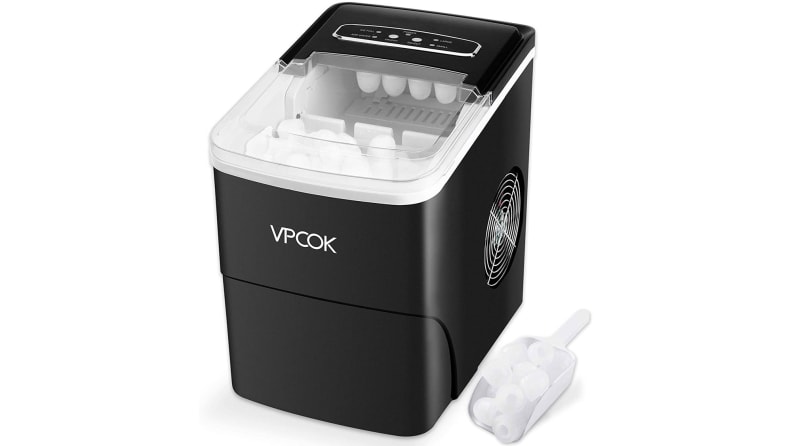
Ice-makers help save freezer space and are convenient, if you have the counter space.
The two best features of dedicated ice-makers are that they churn out ice very quickly and don't take up any freezer space. Many portable ice-makers can produce a batch of ice in under 10 minutes, which is significantly faster than using a tray in your freezer. You will need to refill the water reservoir every 45 minutes or so at their maximum speed. Since dedicated ice-makers have their own internal ice reservoirs, you also don't need to rearrange your freezer to create enough room for all your ice: They take up counter or floor space instead, which is typically easier to come by.
This being said, just because it's not taking up freezer space doesn't mean your ice-maker won't be in the way. Countertop models are often larger than a toaster, which may be a no-go for cramped kitchens. Larger models that have an intake will need to be located near a water source, and not every kitchen has space for a waist-high obelisk.
Dedicated ice-makers are also much more accessible than a traditional tray of ice cubes. Let's be honest, if you're a guest somewhere and need ice, it feels a bit intrusive to go rooting around in someone else's freezer and the experience can range from neutral to revelatory. Having a dedicated ice-maker makes it clear where your guests can find ice and keeps your freezer secrets safe.
Ice-makers are also more limiting in terms of what shapes they can make. While some models do have a few shape options—such as varying sizes of bullet, cubed/crushed, or nugget—it's limited to those shapes specifically. We couldn't find any current models that also allow for attachments or inserts to allow you to make different kinds of ice. If you want something different, you'll need to buy a second ice-maker. Ice-makers can be very expensive. Basic ice-makers start at about $100 and have a relatively high ceiling on cost depending on just how industrial you need your ice production to be.
Built-in ice-makers offer ease
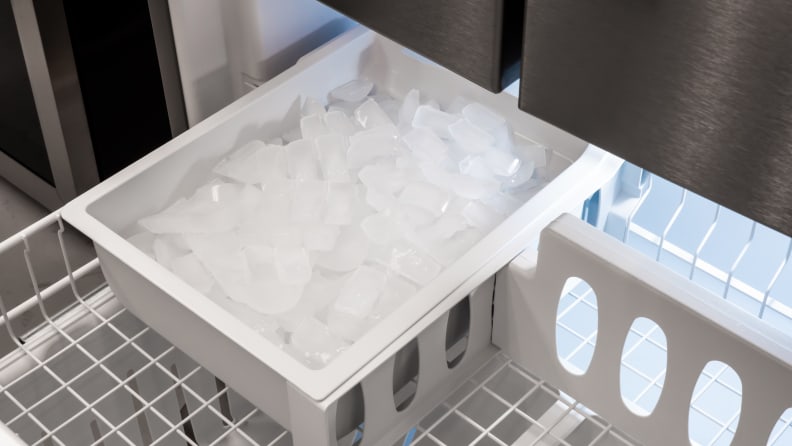
Ice reservoirs can help you anticipate demand, but take up a lot of space.
The ice-maker built into your fridge has quite a few things going for it, chief among them being convenience. Through-the-door dispensers provide an easy way to get ice without having to root around for it in a full freezer, which can invariably result in rock-hard leftovers tumbling onto your toes. It'll also refill automatically (provided it's connected to a water source) as soon as it senses its ice reservoir isn't full.
Built-in ice-makers can also be slow to replenish, when compared to countertop models. Many built-in ice-makers are notoriously slow, or have very small reservoirs. Through-the-door dispensers exacerbate these issues because they typically have much smaller reservoirs. Built-in ice makers aren't made with speed or volume in mind. One fridge we tested could only make 8 cubes in 90 minutes.
They are also relatively compact when compared to countertop models. Typical built-in dispensers take up space in either the fridge or freezer compartment for the ice-maker itself, with additional space needed for a reservoir, and it can really cut into storage space when not implemented properly. It's an unavoidable downside if you're making and storing ice in your fridge.
The product experts at Reviewed have all your shopping needs covered. Follow Reviewed on Facebook, Twitter, and Instagram for the latest deals, product reviews, and more.
Prices were accurate at the time this article was published but may change over time.


